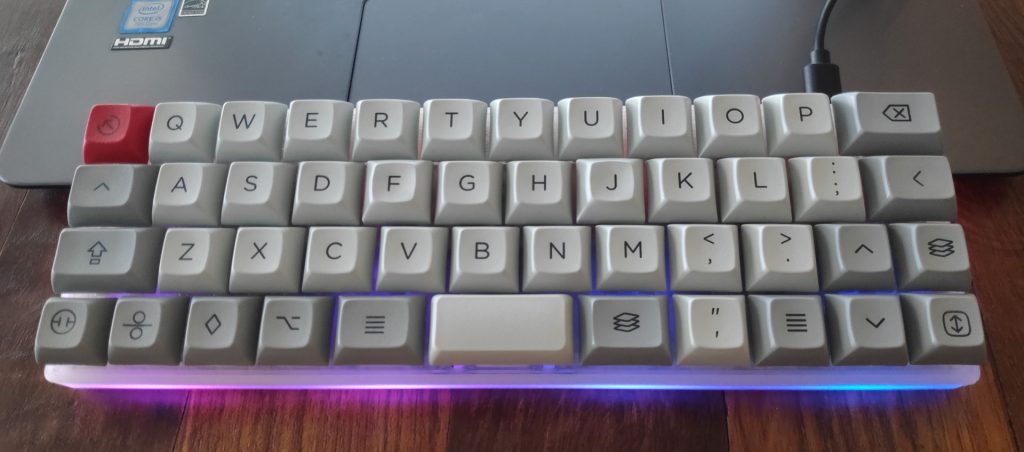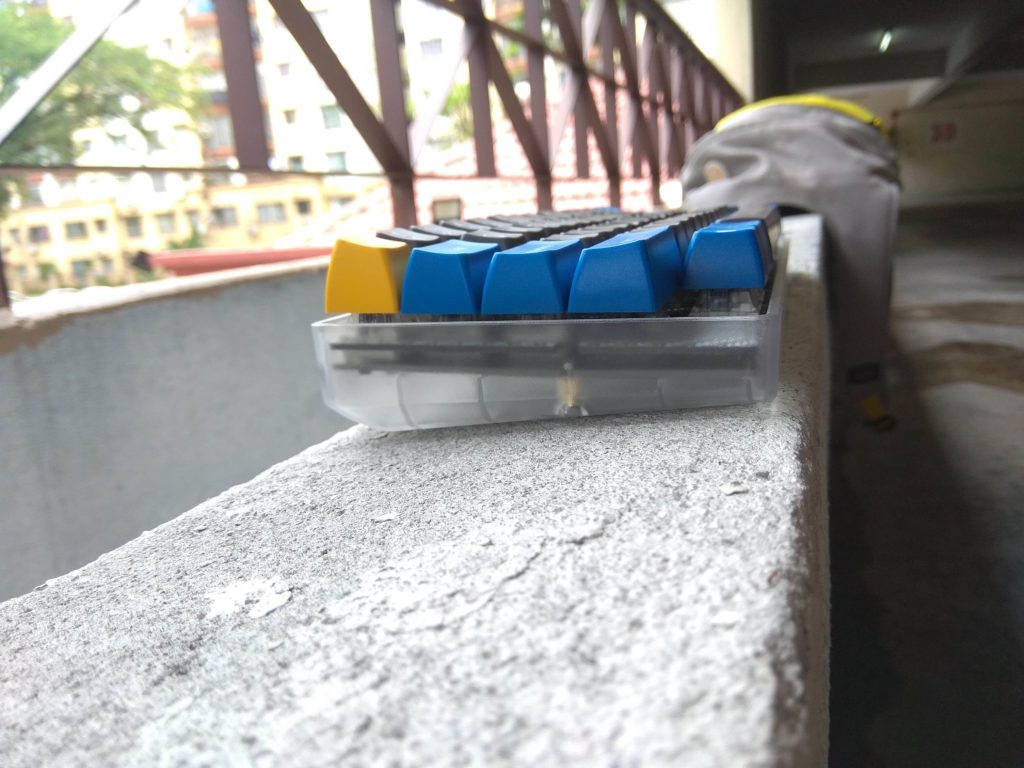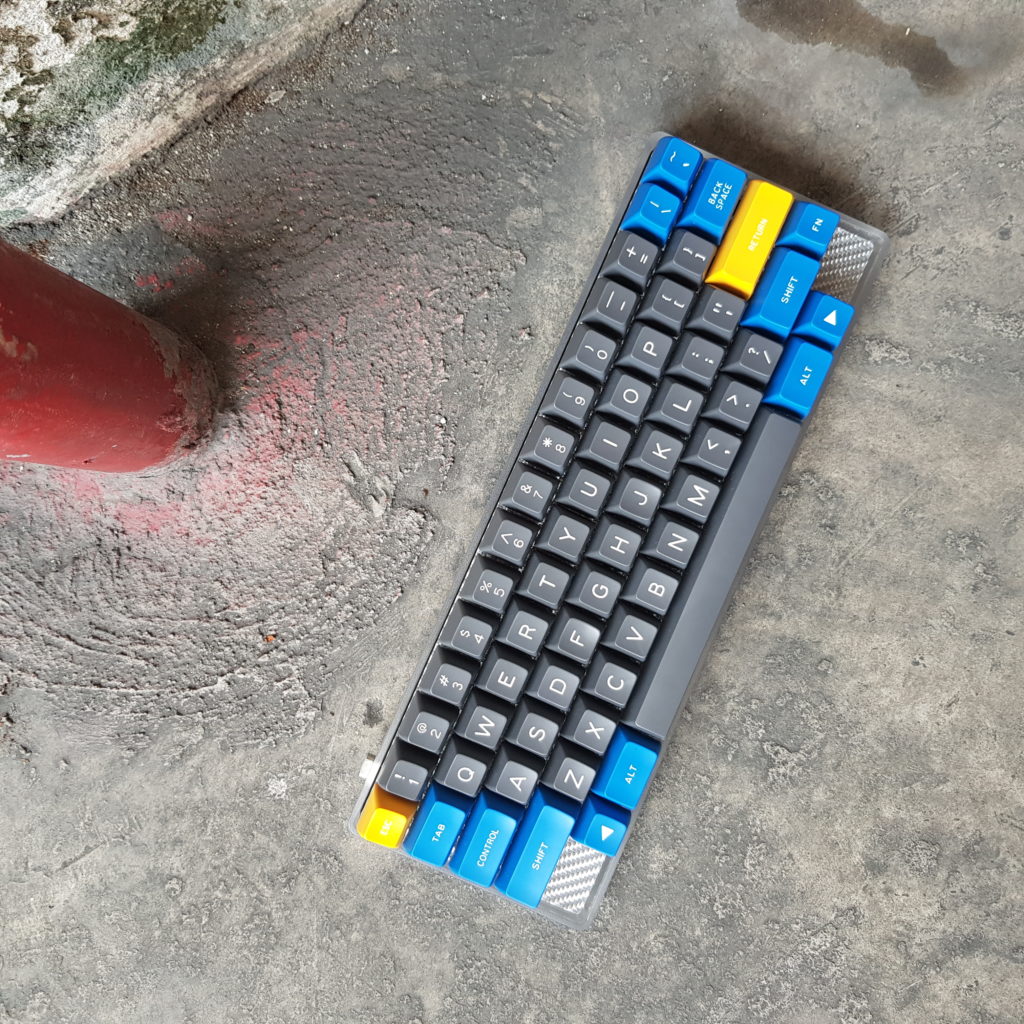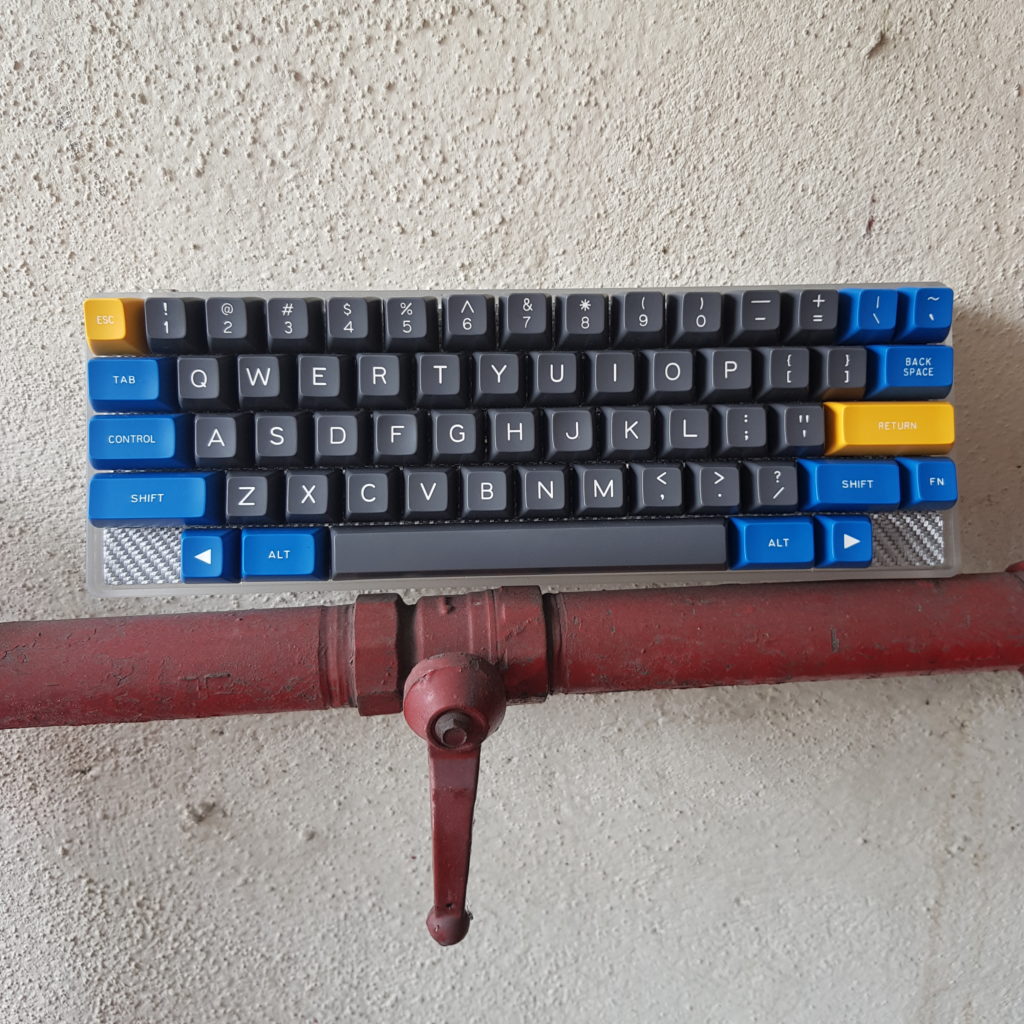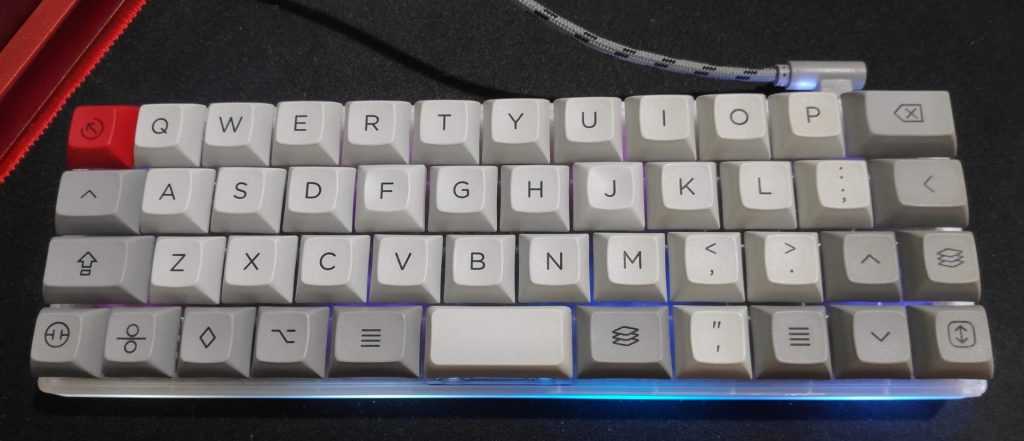
When Keyhive announced the UT47.2, I was immediately interested: a hotswap staggered 40% keyboard kit for $38 (group buy price – excluding shipping, switches, keycaps and case) – what more could you ask for?
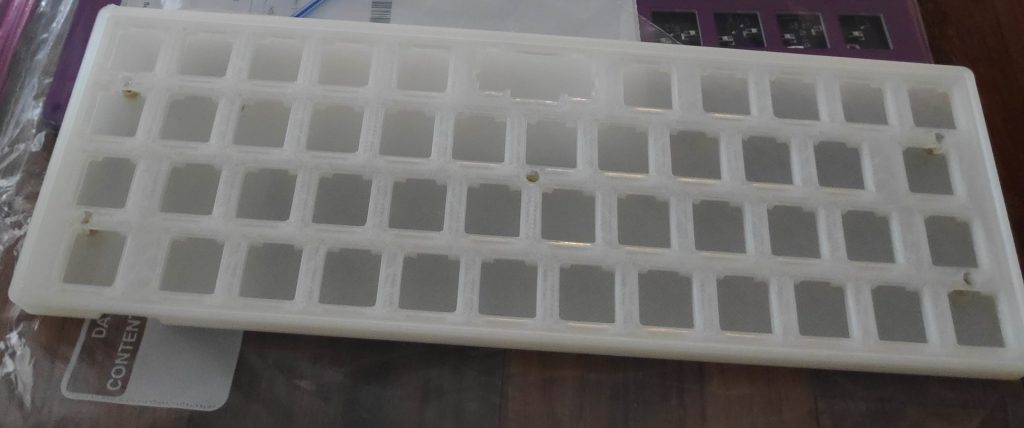
I purchased the optional 3D printed low-profile case since I wanted more protection for the PCB than the default kit provided, and I’m more than happy with it. Despite the case and plate being 3D printed, I had no issues inserting switches into the plate, which lined up with the PCB and case perfectly. Assembly was a breeze.
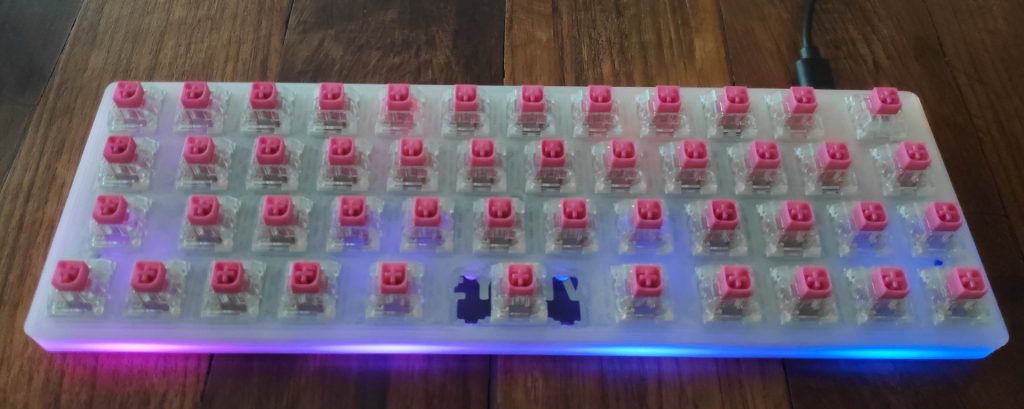
Kailh Box Pink were my switches of choice and after using them for a day, it’s safe to say I’m in love. Box Pink is my new favorite clicky switch. It makes me wonder why nobody is talking about them? They feel like a slightly heavier Box White switch with a much deeper click – similar to how a Box Navy sounds, but softer! I’m definitely picking up more of these for future clicky builds. If what I’ve said sounds like what you’re looking for, give them a shot. You won’t regret it. Great job, NovelKeys!

After testing out the switches, the next step was putting the keycaps on – which took more time than putting the board together, I kid you not. Major props to Keyhive for the wonderful experience. Keycaps are DSA Granite, which was what I had on my (sold) Vortex Core. They couldn’t have asked for a better new home.
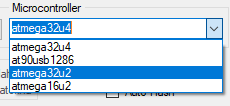
Flashing the keyboard was straightforward – just remember to set your QMK Toolbox configurator microcontroller to atmega32u2 (something I missed initially), and you’re good to go. I’ve been using 40% boards for a while now so I already knew what layout I wanted on it – there was no need to experiment. For this keyboard, I used a combination of my Planck and Kumo (Minivan) layout. If you’re interested, you can preview it or download the .hex and .json here.

While there is a lot to praise about the UT47.2 – I do have some minor complaints (none were deal-breakers for me, but I thought I’d point out). Firstly, it uses a 1.25u (enter) key on the home row. This isn’t an issue if you’re using flat profile keycaps like DSA, but on sculpted profiles (i.e. Cherry), it’s going to be difficult finding keys for it in the right profile (almost impossible if you want the correct legends). A handful of upcoming keysets will be addressing the need for this extra key. But if you plan to use an existing sculpted keyset with this board, you’re going to have mismatching profiles for that 1.25u key since most 40s kits in the past only have one of those (usually with the Tab legend).

The kit didn’t come with stabilizers for the 2u space (unnecessary, but supported by the PCB and plate), rubber bumpons (also unnecessary, but something I appreciate) or a USB-C cable. Those are my only complaints.
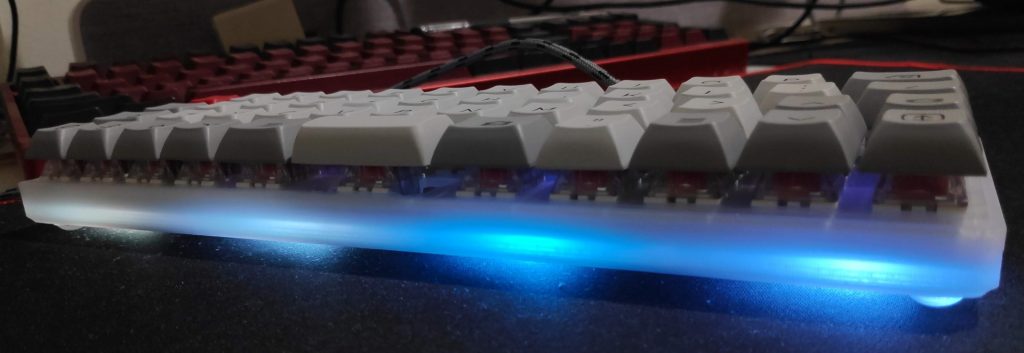
If you’re interested in picking up one for yourself and missed the group buy, fret not. Keyhive has some extras for sale here ($50) and you can purchase the optional case here ($25) – Keyhive has tons of different designs. SpaceCat also has the UT47.2 on sale here.
Conclusion: the UT47.2 is one of the best staggered 40% keyboards I currently own. If you’re thinking of trying out the form factor, on a budget and not looking to solder – this keyboard is right up your alley!
